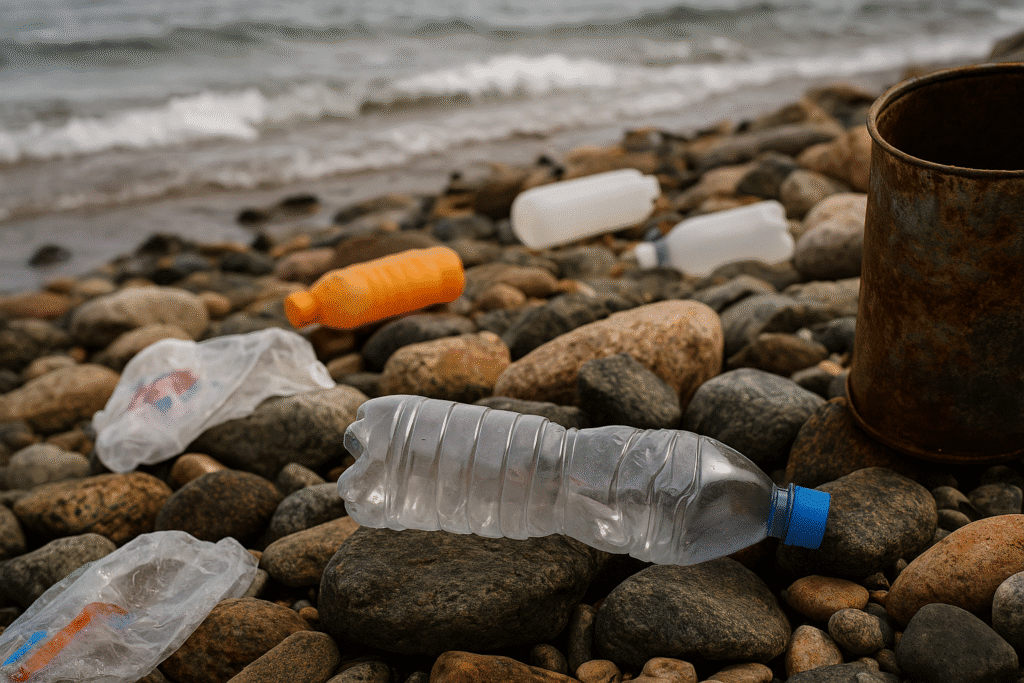Here’s the truth. You can eat the cleanest grass-fed steak and wild salmon every day, but if your body is weighed down with toxins from the modern world, you’re still fighting uphill. The world in 2025 is not the world our ancestors lived in. They didn’t have plastic in their blood or “forever chemicals” in their water. We do.
That sounds heavy, and it is, but it doesn’t mean you’re powerless. Once you see where these toxins are sneaking in and what they do inside your body, you can start making changes that shift the balance back in your favor.

Microplastics: The Plastic Inside Us
Microplastics are tiny fragments that break off from bottles, packaging, clothing, and basically anything plastic. They’re everywhere now. In the ocean, in the food chain, and even inside us. Studies in 2025 have found microplastics in human blood, in breast milk, even in the placenta.
The problem isn’t just the plastic itself. Plastics leach chemicals like BPA and phthalates that mess with hormones, metabolism, fertility, and brain function. Think about that for a second. Tiny plastic particles floating through your bloodstream, tweaking the very signals that run your body. They get in through bottled water, packaged food, synthetic clothes, and even the dust in your living room.
Forever Chemicals (PFAS): The Immortals
PFAS are called forever chemicals because they basically never break down. Once they’re in your body, they stick around for years. They’re in nonstick pans, waterproof jackets, takeout containers, carpets, makeup, and the water coming out of your tap.
Almost everyone in America now has PFAS in their blood. They throw off your thyroid, weaken your immune system, and are linked to cancers. The crazy part is that you don’t even notice it happening because the exposure is slow, daily, and constant. You’re just cooking on your pan, drinking from your cup, sitting on your couch — and all the while these chemicals are working their way in.
Heavy Metals: The Slow Drainers
Mercury, lead, arsenic, cadmium. These aren’t just chemistry class words — they’re showing up in our food, our water, and our homes. Over time they build up in tissues, and your body can’t just flush them out easily.
Mercury especially loves the brain. It settles in and messes with focus, memory, and mood. Lead damages the nervous system. Arsenic disrupts hormones. You get exposed through old pipes, contaminated water, pesticide-sprayed produce, and big fish like tuna and swordfish. It’s not about one meal — it’s the slow drip over time that drains your energy and resilience.
Protecting Yourself in 2025
Here’s the good news: you’re not stuck with this. You can fight back.
Start with your water. Get a good filter — reverse osmosis or activated carbon — and stop trusting that “tap water is safe” just because it’s clear. Drink from glass or stainless steel instead of plastic. Never heat food in plastic containers.
Use sweating as your natural detox. Sauna sessions help push heavy metals and plastics out through the skin. Support your system with minerals like magnesium, zinc, and selenium — they compete with heavy metals and stop them from locking into your cells.
Food matters too. Stick to grass-fed meats and wild fish, and choose smaller fish like sardines or mackerel instead of the big predators that carry higher mercury loads. Open your windows, let fresh air in, use a HEPA filter if you can, and keep your space clean to cut down microplastics and dust.
Toxins are the hidden mismatch of modern life. Our ancestors never had to think about BPA, PFAS, or mercury poisoning from fish. They didn’t live in a plastic, chemical-heavy environment. We do. And it’s no coincidence that chronic disease rates are climbing while our environment gets dirtier.
But that doesn’t mean we’re doomed. Paleo in 2025 isn’t just about eating clean food. It’s about defending your biology against the constant chemical storm we live in. When you eat nutrient-dense food, sweat often, get sunlight, filter your water and air, and make smarter choices, you tip the scales back toward health.
Health isn’t luck. It’s about creating the right environment inside your body. Strip away the modern junk, and you’ll realize your biology still knows exactly how to thrive.
Sources
Ragusa, A. et al. “Plasticenta: First evidence of microplastics in human placenta.” Environment International (2021)
Sunderland, E. et al. “Human exposure to PFAS and health outcomes.” Nature Reviews (2019)
ATSDR. “Toxicological Profile for Mercury.” (2023 update)
Frontiers in Environmental Science (2025). “Microplastic and PFAS exposure as emerging drivers of metabolic dysfunction.”

Leave a Reply